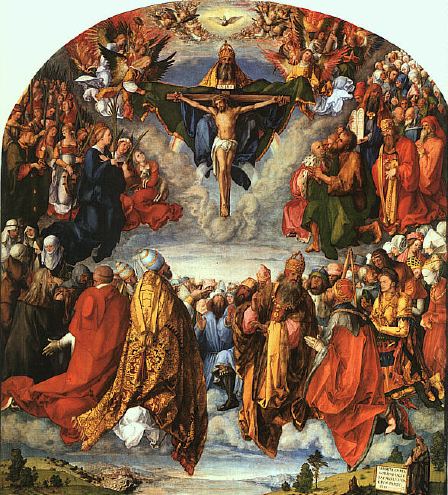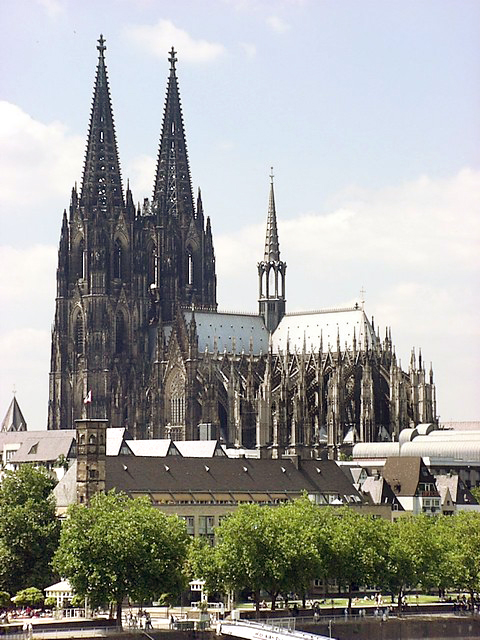The final, trumpets-and-cymbals chapter of my Medieval Wisdom: An Exploration with C S Lewis explores a theme that I think can most benefit modern Western Christians, if only we grasp it. This is the opening bit, which starts with a biblical figure who modern Protestants regard with some nervousness as a symbol of Roman Catholicism–the Virgin Mary:
I was working at Christianity Today in the early 2000s, as managing editor of Christian History magazine. After getting a few issues under my belt, I hesitantly offered the suggestion that we do an issue on “Mary in the Christian Imagination.” Though the idea met with more support than I had feared (at that distinctively evangelical Protestant magazine), my art director did hazard the prediction that we would lose readers if we did the topic. Imagine my surprise when in the end, not only didn’t we lose any readers (that we knew), but we actually won the Evangelical Press Association’s award that year for best single-topic issue. This told me we’d hit a nerve with our evangelical Protestant readers. Apparently, there’s “something about Mary,” even for the descendants of Protestant fundamentalists.
By the time I’d finished working on the issue, I was pretty sure I knew what that “something” was. As I wrote in the issue’s “Editor’s Note”:
“It’s a sleepy Wednesday night and I’m the only one left in the office, on the top floor of CTI’s modest Carol Stream, Illinois facilities, across from the Aldi’s grocery store and the MacDonalds restaurant. I’ve been looking through the images on the layouts for this issue—picture after picture of scenes starring Mary, the mother of Jesus—until they have all begun to blur together in one big scene; kind of like Memling’s “Seven Joys of Mary” on our opening pages. And I’m wondering: Do I know the mother of Jesus—the theotokos, or “the one who gave birth to the one who is God”[1]—any better now than when we started this issue?”
“I’m just not sure. Part of me still feels like a kid in a museum: The Renaissance masterpieces, the Byzantine icons, the 15th-century German wood carvings … these are all too lofty and alien—something from a different age and a different religious sensibility. Can all of this really mean anything to me: a college-educated twenty-first century suburbanite, an “evangelical,” used to thinking of Mary for only a few days around Christmas?”
Although I admitted in that note that I hadn’t become convinced by the lavish Marian devotion and theology of the Roman Catholic Church, I had been captivated by one aspect of the Mary story: “the flabbergasting fact that God himself came down and chose to be conceived, and carried to term, and born the son of a real, living woman.”
The Reformation scholar Timothy George, a Protestant who had just written a book called The Blessed Evangelical Mary, had reminded me in a conversation, “God didn’t have to do it that way. He could have descended from heaven as a little fresh baby God just made and plopped down on earth.”
“But he did choose to do it ‘that way,’” I reflected, “the normal, human way. Aside from the divine conception, he came the same way we all do: through pregnancy, labor, birth, infancy.” That single fact, I mused, “elevates all of humanity.”
I concluded, “I hope ‘meeting’ Mary will face you, as it has me, with the extraordinary truth of the Incarnation. Look: Here is the flesh-and-blood woman who bore our savior, suckled him, clothed him, taught him, and followed him. Then, at the Cross, she sorrowed over him. And then at last, in the Upper Room, she participated in the birth of his church. No wonder his church has dwelt on her so lovingly.”
In the second half of the medieval era, an age infatuated with the details of the Gospel accounts, no scene was painted more than the Annunciation: the angels’ announcement to Mary that the Son of God would be incarnated in her womb. What we miss today about the devotion to Mary that rose to new heights in that period is that it was first and foremost a devotion to the Incarnation as the key fact of salvation history. We tend today to skip over Christ’s Incarnation, seeing it as merely a necessary step to his cross and the substitutionary atonement. Late medievals, too, paid devotional attention to the crucifixion, but as with their devotion to the Incarnation, the focus here was squarely on the miracle that God, in his love, has become flesh for us, suffering all that we suffer, in solidarity with us.
[1] Jaroslav Pelikan’s clarifying formula, with which he replaced the suspiciously exalted modern translation “mother of God,” to remind us that nobody who used the term in the early and medieval church actually thought Mary was somehow the progenitor of the eternal, immanent, preexistent Second Person of the Trinity!
Related articles
- Reclaiming the physical in Christian worship (gratefultothedead.wordpress.com)
- Seeing His humanity and worshiping with all of ours – hearts and bodies included (gratefultothedead.wordpress.com)


 Medieval Wisdom for Modern Christians
Medieval Wisdom for Modern Christians






